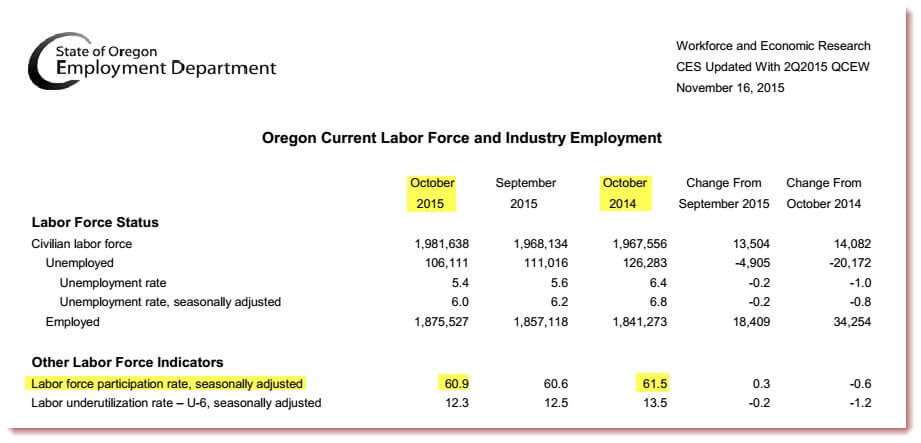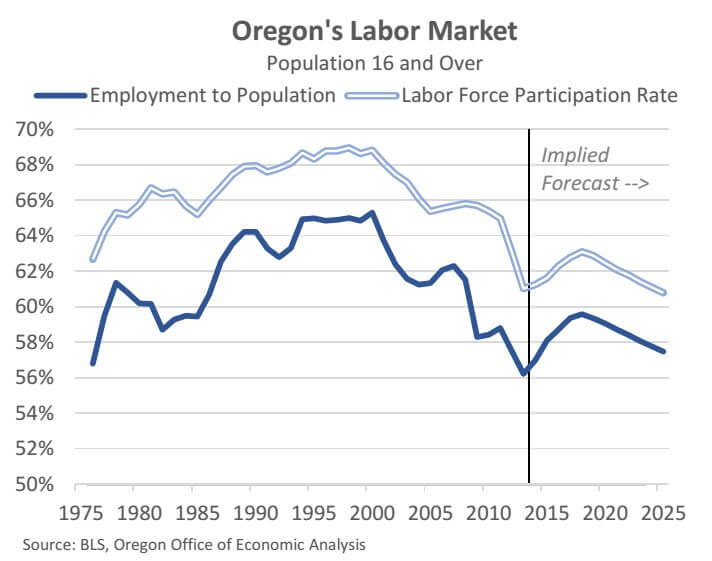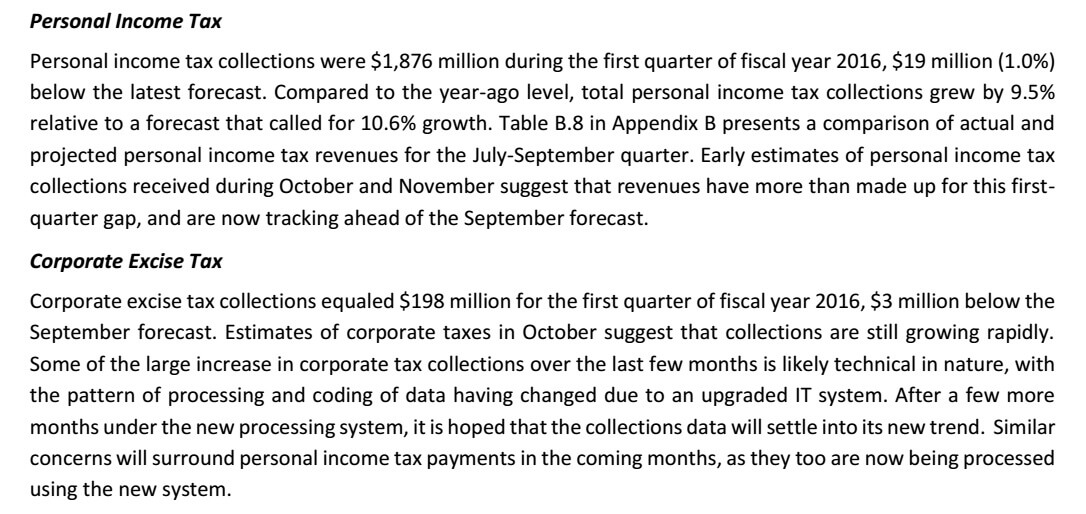by Dan Lucas
On Wednesday the State of Oregon’s Office of Economic Analysis released the final quarterly Oregon Economic and Revenue Forecast for 2015 [2]. The opening paragraphs of the executive summary of the forecast contain these hopeful signs:
- “Full employment is finally within sight.”
- “a long stretch of modest gains in recent years have cumulatively delivered significant progress across the economic spectrum”
- “The number of actual jobs and job openings posted by businesses have never been higher”
- “workers are finally becoming a bit scarce. The result is businesses must now compete on price (wages) to attract and retain the best employees”
- “average hourly earnings for all workers are now increasing faster than inflation”
- “Job growth over the past year in Oregon is more than one percentage point faster than in the typical state”
- “Oregon’s General Fund revenues are growing strongly. Over the first four months of the 2015-17 biennium, personal income taxes, lottery sales and corporate taxes all grew at double-digit rates relative to last year.”
- “Total available resources – combined General Fund and Lottery – are now expected to be $56 million larger over the current biennium than what was expected when budgets were drafted in the summer.”
That all sounds good, right? Unfortunately those upbeat statements belie some deeper realities in Oregon’s job and revenue picture.
Dark underbelly of job picture in Oregon
The “big lie [3]” continues. Looking beyond the simplistic and misleading unemployment rate, record numbers of Oregonians are out of the labor force. They’re retiring, waiting longer to enter the job market or giving up on looking for work.
That record number of Oregonians out of the labor force means that [4] “Just three in five Oregon adults are in the labor market, leaving the smallest share of workers and job seekers supporting the population since officials started keeping track.”
The Oregonian reported in 2013 [5] that “Oregon’s labor force participation is at a 40-year low: an average 63.2 percent in 2012.” The article attributed the decline to an aging workforce (which caused “about half of the drop”), “teens and 20-somethings waiting longer to enter the job market”, and the recession/discouraged workers. In August 2013 the Oregonian reported [6] “Some workers are being forced to retire earlier than planned.”
It’s continued to go downhill from there.
The most recent numbers from the State of Oregon Employment Department show [7] that the labor force participation rate fell further than 2012’s 40-year low of 63.2% down to 61.5% in October 2014 and then further down to 60.9% in October 2015.
A May 2014 Oregonian article noted [4] that the 2013 Oregon labor force participation rate was the “lowest recorded point,” “since officials started keeping track in 1976.” The 2013 Oregon labor force participation rate hovered around 61.3% (61.6% in Apr 2013 [8], 61.3% in Jul 2013 [9], and 61.1% in Nov 2013 [10].)
The current October 2015 rate of 60.9% is lower than that previous lowest recorded point.
What does that mean? A June 2013 Oregonian article noted [13] that a declining percentage of adults in the workforce “leaves fewer and fewer workers supporting Oregon’s population, weighing down a per-capita personal income that already lags the national average.”
Dark underbelly of revenue picture in Oregon
Oregon’s revenue from income taxes is down, but Oregon is doing better at exploiting people’s addictions [14].
The Oregonian reported [15] on Wednesday “Oregon’s Legislative Revenue Office found drops in key areas when compared to the state’s last forecast, which came out in August. Personal income tax collections dropped nearly $19 million. Corporate income taxes fell nearly $3 million in that span. Personal income overall fell $1.3 billion.” [for the first quarter of fiscal year 2016]
So if income tax revenues are down, then how can the current revenue forecast “climb $56 million beyond what was predicted over the summer? [15]”
The Oregonian answers that: [15] State Economist Mark McMullen “joked about ‘Sodom and Gomorrah,’ noting surprising growth in ‘sin taxes’ and other revenue sources associated with vice and traffic tickets. Beyond lottery sales — led by new video terminals that critics see as unfairly targeting problem gamblers and the poor — cigarette and alcohol sales are up.”
A Eugene-area Democrat was quoted [15] straddling that ethical fence: “Rep. Phil Barnhart, D-Eugene, chairman of the House revenue committee, called the lottery gains ‘unfortunate’ even as he noted ‘the state depends on the revenues these gains produce’ to pay for schools, housing and other services.”
To read more from Dan, visit www.dan-lucas.com [18]




